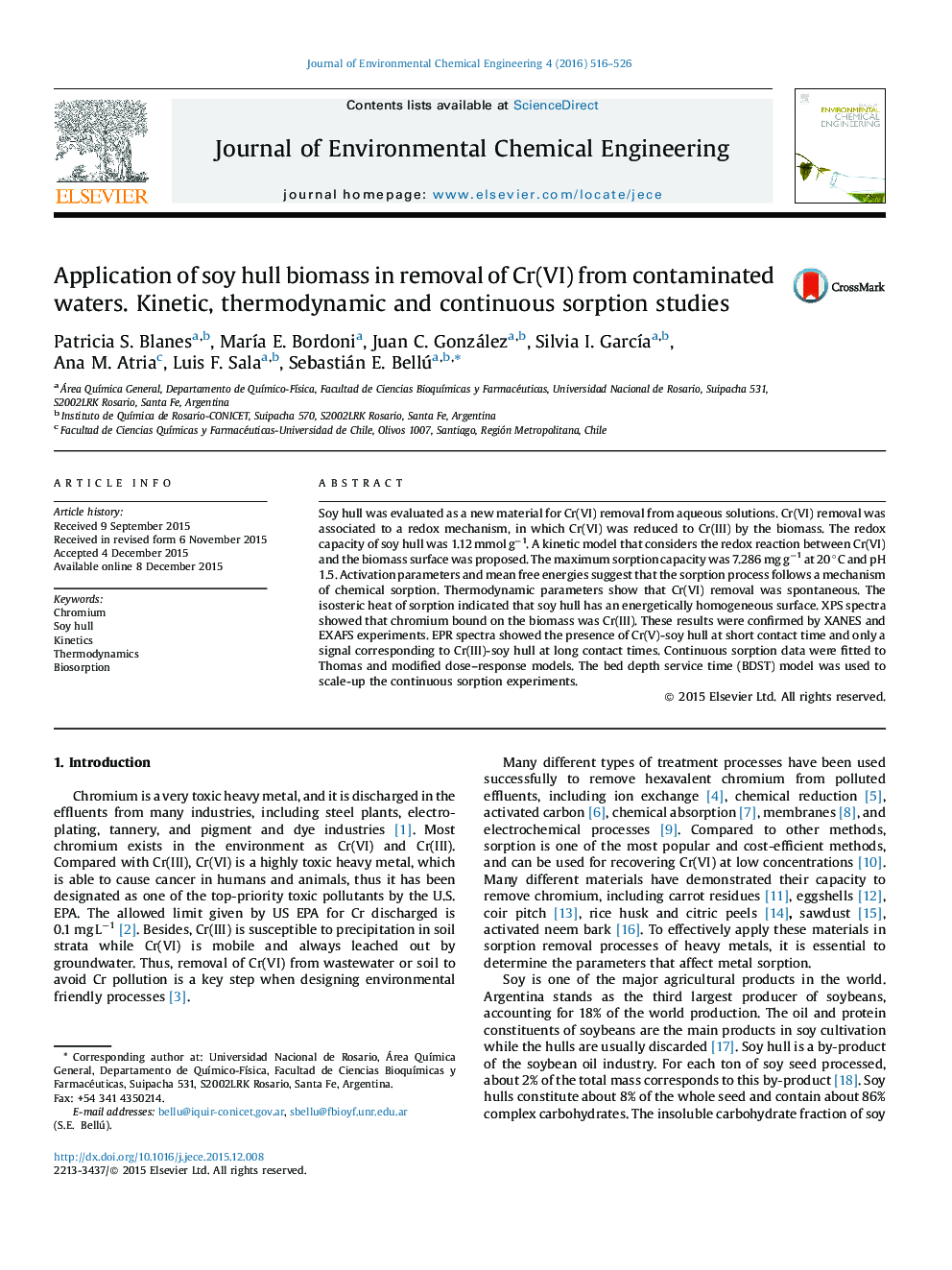| کد مقاله | کد نشریه | سال انتشار | مقاله انگلیسی | نسخه تمام متن |
|---|---|---|---|---|
| 221905 | 464267 | 2016 | 11 صفحه PDF | دانلود رایگان |
• Soy hull is an effective biomass for Cr(VI) removal from wastewater.
• The maximum sorption capacity was found to be 7.286 mg g−1.
• Sorption process was spontaneous, endothermic and the driven force was entropic.
• Redox mechanism was confirmed by EPR, XPS, XANES and EXAFS.
• The critical bed depth, Z0 was determined to be 0.2 cm.
Soy hull was evaluated as a new material for Cr(VI) removal from aqueous solutions. Cr(VI) removal was associated to a redox mechanism, in which Cr(VI) was reduced to Cr(III) by the biomass. The redox capacity of soy hull was 1.12 mmol g−1. A kinetic model that considers the redox reaction between Cr(VI) and the biomass surface was proposed. The maximum sorption capacity was 7.286 mg g−1 at 20 °C and pH 1.5. Activation parameters and mean free energies suggest that the sorption process follows a mechanism of chemical sorption. Thermodynamic parameters show that Cr(VI) removal was spontaneous. The isosteric heat of sorption indicated that soy hull has an energetically homogeneous surface. XPS spectra showed that chromium bound on the biomass was Cr(III). These results were confirmed by XANES and EXAFS experiments. EPR spectra showed the presence of Cr(V)-soy hull at short contact time and only a signal corresponding to Cr(III)-soy hull at long contact times. Continuous sorption data were fitted to Thomas and modified dose–response models. The bed depth service time (BDST) model was used to scale-up the continuous sorption experiments.
Figure optionsDownload as PowerPoint slide
Journal: Journal of Environmental Chemical Engineering - Volume 4, Issue 1, March 2016, Pages 516–526
